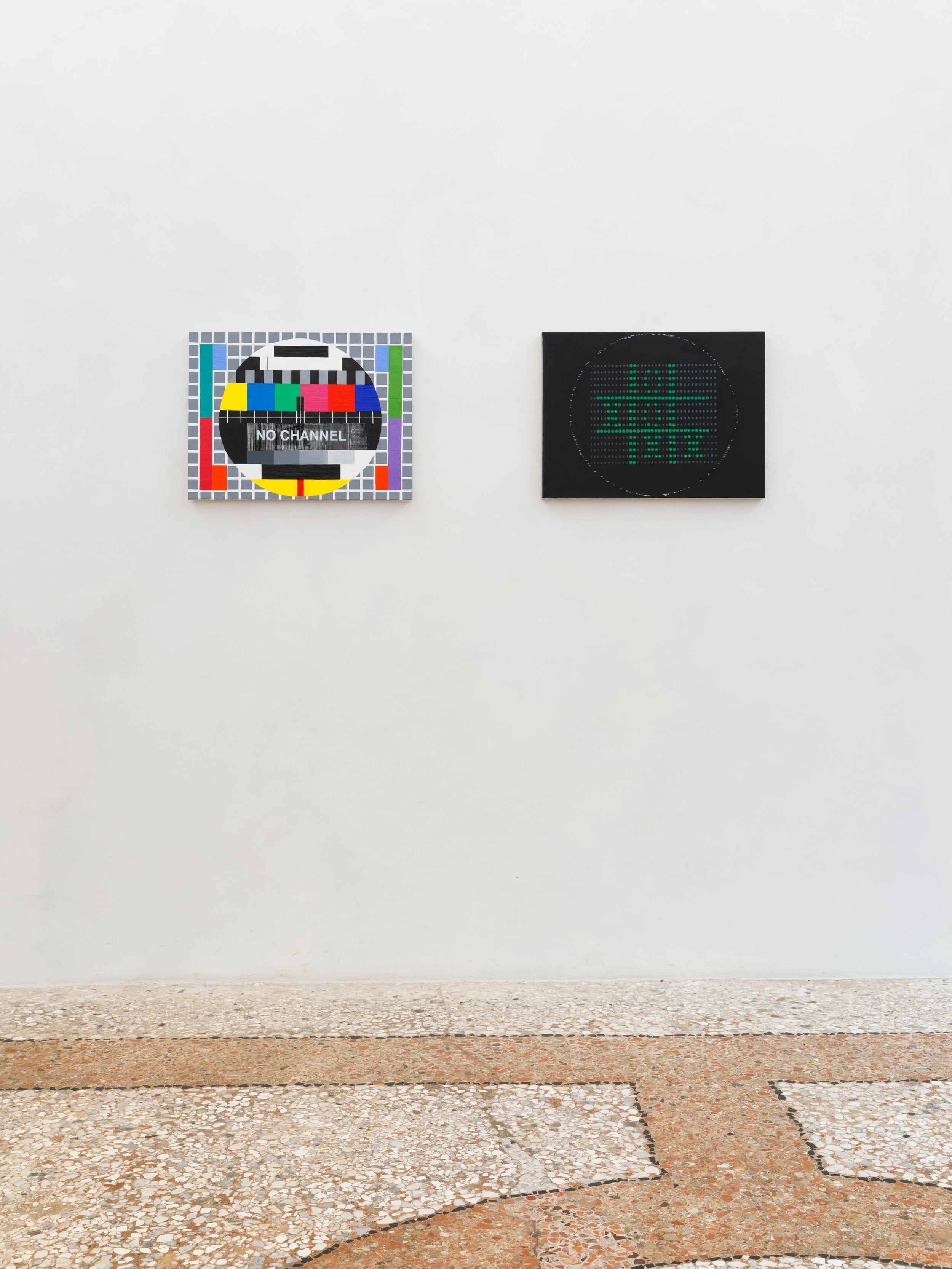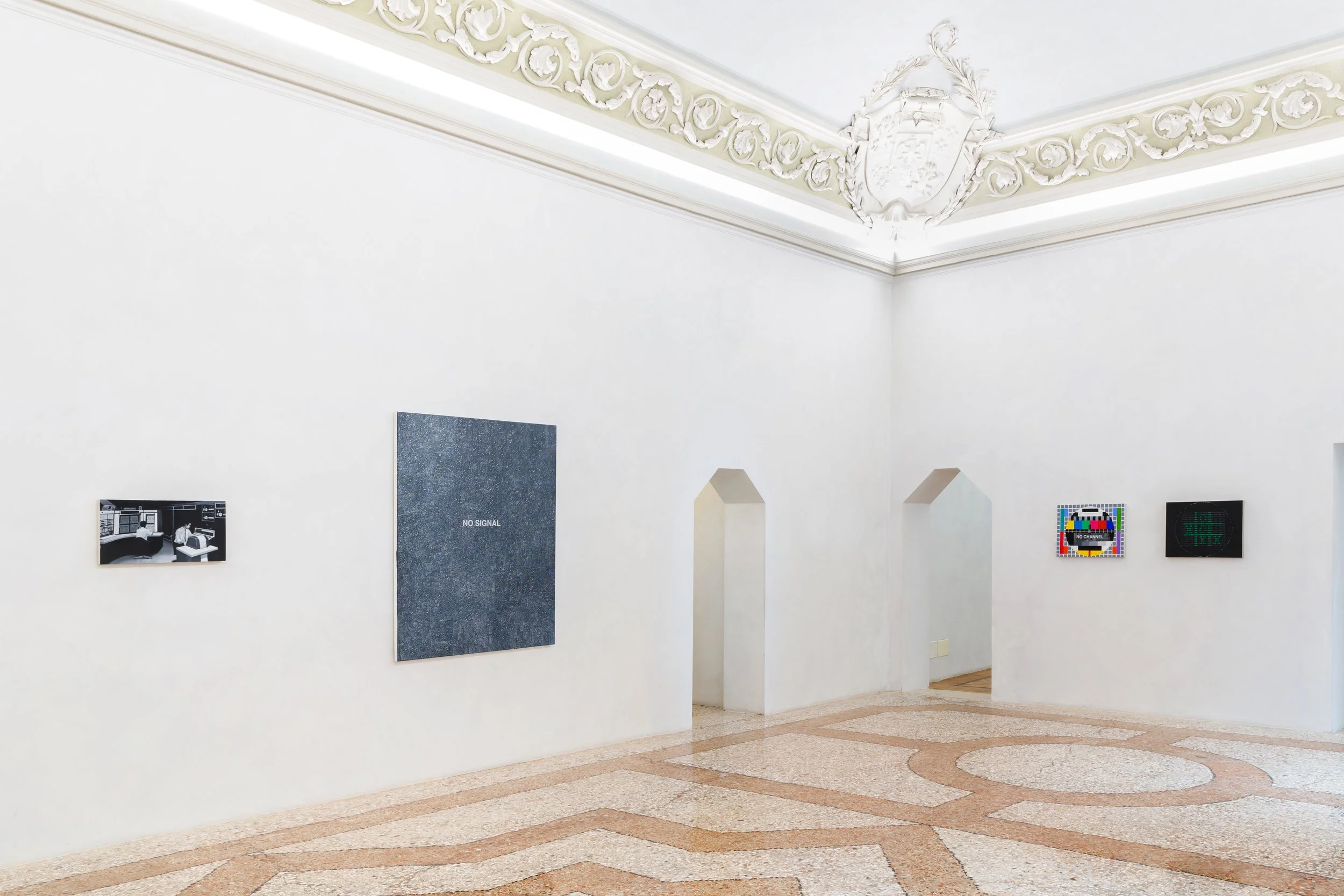NO CHANNEL, 2019
NO CHANNEL, 2019
Acrylic medium on linen
46 x 61 cm (18 x 24 in)
NO CHANNEL (2019) explores the nostalgic and symbolic imagery of television test patterns—once ubiquitous, now fading relics of an analog era. These geometric grids and vibrant color blocks, designed for calibrating broadcast signals, once served as silent placeholders in the absence of content. Tan Mu reinterprets this visual language, transforming a functional tool into a reflection on communication, technology, and obsolescence. By freezing the moment of "no channel," the work highlights the tension between presence and absence, order and interruption. It evokes the anticipation of waiting for a signal, a moment of uncertainty that parallels our broader relationship with media and technological change. In an era where digital algorithms have replaced static screens, NO CHANNEL prompts reflection on how technology and the media landscape shape our perception of reality, as well as humanity’s ongoing pursuit of clarity and connection in a world increasingly dominated by digital signals.
Signal, May 5 – June 10, 2022, Peres Projects, Milan
Signal, May 5 – June 10, 2022, Peres Projects, Milan
Signal, May 5 – June 10, 2022, Peres Projects, Milan
Q: Could you talk about the imagery in your work NO CHANNEL (2019), which depicts the signal calibration process?
Tan Mu: This work is one of my earliest pieces, inspired by the imagery seen during television signal calibration. In the past, television signals required manual tuning to ensure accurate image transmission, and these calibration visuals resembled the interface depicted in my previous work LOADING…. Behind this process lies the complexity of signal transmission, where different frequency bands are adjusted to ensure that images reach every household correctly. Today, this manual calibration method has been phased out, replaced by automatic signal correction, making these calibration visuals a relic of a particular era.
Q: You mentioned that the colors and shapes in the image serve a functional purpose. Could you elaborate on that?
Tan Mu: The colors and shapes in the image are not randomly designed; they correspond to different frequency bands used in the signal calibration process. Each block's size and color have a specific functional meaning, helping to adjust the signal’s frequency and strength. The black vertical bars in the image represent frequency bands that appear during calibration. These bars not only serve as a visual representation of signal frequencies but also remind me of my early experiences working with Hertz frequency bands to control images. I find this precise correlation fascinating because it reveals the logic and functionality behind visual imagery. Unlike traditional painting, these visuals are not emotional expressions but rather human-engineered symbols with clear functions. Through this work, I aim to capture the fleeting moments of signal transmission and explore how visual imagery conveys complex information.
Q: How do you represent the process of signal calibration through painting?
Tan Mu: In my creative process, I use acrylic paint along with masking tape techniques. I first apply tape to create straight lines and geometric shapes, then layer colors step by step, waiting for each layer to dry before proceeding to the next. This layering method not only enhances the depth of the image but also symbolizes the overlapping and adjustment of different signal frequencies during calibration. The circular forms and black vertical bars in the painting remind me of embryos and logic chips, symbolizing the precision and complexity of signal transmission, much like biological and mechanical components.
Q: How do you view the role of visual imagery in information transmission?
Tan Mu: Visual imagery plays a crucial role in information transmission. Most of the time, we understand the world through vision—our brains analyze and categorize visual information to help us comprehend and learn new things. The colors and shapes in signal calibration screens are not only precise representations of signal frequencies but also embody the functionality of visual language. NO CHANNEL is more than a record of the signal calibration process; it captures the visual memory that shapes our information era.




